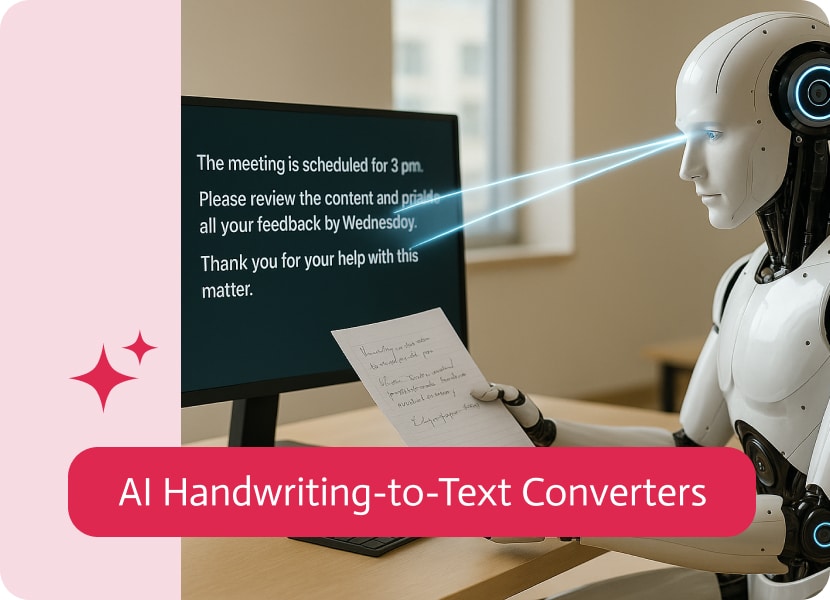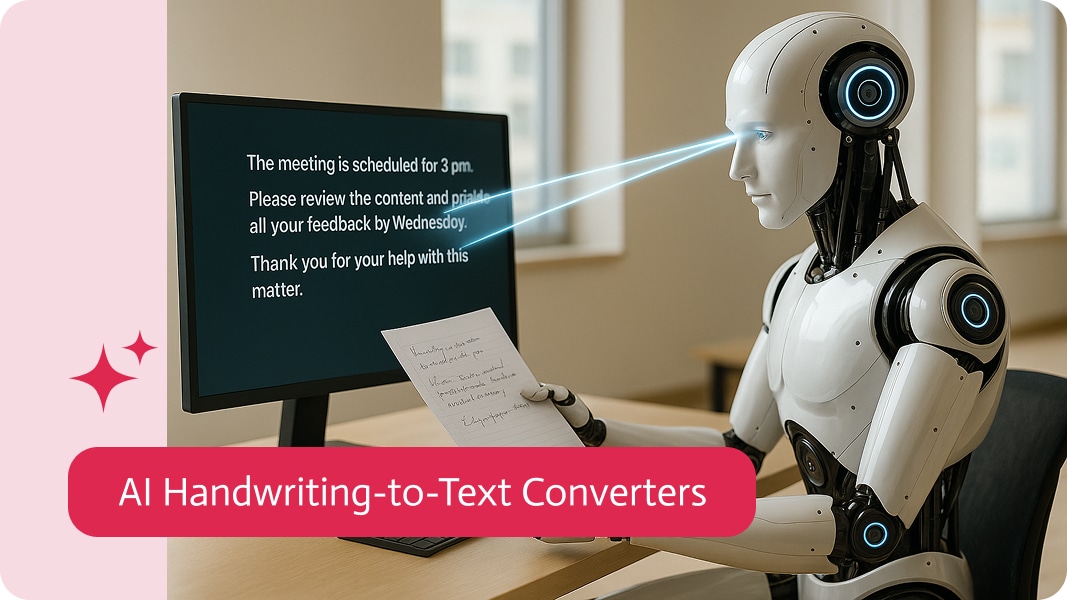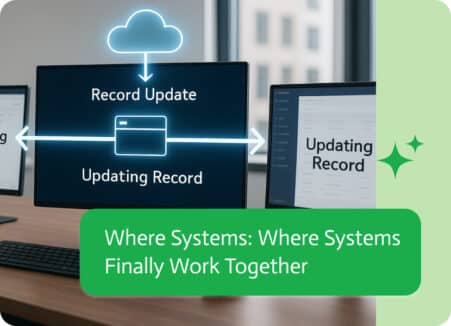

How Handwriting-to-Text Converters Are Changing The Game
In simple terms, it’s a tool that takes what you’ve written by hand on paper, tablet, whiteboard, napkin, or whatever and converts it into editable, searchable, digital text. It’s like a translator, but for your messy scribbles you call notes.
So, What Is a Handwriting-to-Text Converter?
Most of us have a drawer full of notebooks, sticky notes, or random scraps of paper with brilliant ideas scribbled in a font only we can read, on good days. Maybe it’s a grocery list from three weeks ago or at least your password hint. But all those scribbles aren’t doing much sitting there collecting dust. That’s where handwriting-to-text converters come in, a techy gift to anyone who’s ever wished their chicken scratch could magically turn into neatly typed text.
There are two methods available, either Optical Character Recognition to identify printed handwriting or Intelligent Character Recognition to interpret cursive and more “artistic” handwriting. Some tools work in real time; others take a snapshot and convert it later. Either way, the end result is the same: your handwritten chaos gets a digital glow-up.
What is Optical Character Recognition or OCR?
OCR recognizes and converts text (like from documents that were scanned, books, or PDFs) into modifiable and searchable digital formats.
Key Features of OCR:
- Designed primarily for machine-printed text.
- Works well on standard fonts and layouts.
- Commonly used in digitizing books, receipts, and business documents.
- Converts scanned text into formats, including Word, Excel, or plain text.
Use Cases:
- Scanning printed contracts for searchability.
- Text extraction from printed documents.
- Archiving old printed documents into searchable databases.
What is ICR (Intelligent Character Recognition)?
ICR is considered the advanced version of OCR, specifically developed to read and interpret handwritten text, even when the handwriting varies from person to person.
Key Features of ICR:
- Recognizes handwritten characters, not just printed ones.
- Makes use of machine learning to improve over time.
- Can handle cursive and non-standard writing with varying accuracy.
- Often integrated into IDP systems.
Example Use Cases:
- Processing a variety of handwritten forms.
- Reads notes or annotations in medical and legal documents.
- Digitizing signatures or handwritten applications.
Why Would Anyone Need This?
Good question.
- You’re a student who takes better notes by hand but can’t find your midterm study guide because it’s buried in a spiral notebook graveyard.
- You’re a creative type who sketches out ideas but wants them to be searchable.
- You wrote an entire meeting on a whiteboard like a genius, then someone erased it.
- You simply can’t read your own handwriting after a day or two.
If any of that feels uncomfortably familiar, you’re the target audience.
The Many Faces of Handwriting-to-Text Tools
These little tools show up in all shapes and sizes, here’s a squiz at the main categories:
1. Pen-and-Paper Traditionalists (OCR Software to the Rescue)
Still rocking paper? No problem. You can scan or snap a pic of your handwritten notes and use OCR to decode it. Some of the top options around include:
- Acrobat (Adobe) OCR: Built into Acrobat, surprisingly accurate if your handwriting isn’t total chaos.
- ABBYY FineReader: Professional-grade OCR, great for converting multi-page documents.
- Tesseract: Free, open-source, and surprisingly powerful (if you’re into tinkering).
- Scanmarker Air: A pen-shaped scanner that converts lines of text as you swipe.
Great For: Digitizing existing handwritten documents, school notes, old family letters, or that journal you forgot you started in 2007.
2. Stylus + Display: Write Once, Change Instantly
Apple didn’t aggressively pursue a place in the note-taking market until they released the Apple Pencil. Handwriting recognition apps are now real-time on Apple devices, and Samsung is not far behind. With the S-Pen, they too offer seamless transcription and hand-controlled typing.
Noteworthy Apps:
- Apple Notes (with Apple Pencil): Functions like a regular note taker from the old days but adds in modern eNote capabilities with stellar recognition of neoteric handwriting.
- Samsung Notes (with S Pen): Surprisingly fluid and accurate. Suggests alternate auto-completion if the user’s hand is too wild with the strokes.
- Microsoft OneNote + Surface Pen: Create, capture, play back, and edit notes with impressive precision. Can author, sketch, execute in-game actions, or edit fluidly and seamlessly.
- Nebo, GoodNotes, Notability: Specializing in extreme attention to legibility.
Best for Digital arts enthusiasts, students, handwriting professionals, and practitioners.
3. The “Snap and Convert” Mobile App Team
- Google Lens: Pro school label scanner, comes free and off.
- Microsoft Lens: Great for whiteboards, receipts, and notepads.
- Pen to Print: This obscure handwriting recognition program focuses primarily on handwriting recognition.
- Evernote: Scans notes and also makes them searchable.
Best For: Capturing meeting notes, whiteboards, or the back of a napkin just before the waiter claims it for good.
4. Smart Pens: Spy Gear for Stationery Nerds
These are physical pens connected to an app capable of both recording and syncing what is being written in real time. To describe them more accurately, they are like the stationary worlds version of James Bond, an ordinary pen on the outside, total nerd on the inside.
Coolest Tools:
Livescribe Smartpen – While you write, it records audio and syncs text to an app.
Neo Smartpen – Appears and feels like a standard pen, uses special paper.
Wacom Bamboo Slate – Write on real paper, convertible later.
Best For: These gadgets are perfect for journal devotees, digital skeptics, and those who still purchase Moleskines but deep down wish everything was cloud-based.
How Accurate Is This Stuff Really?
Specific software accuracy varies with the user’s handwriting. Notebooks filled with elegant scrolls and refined characters will have the software praising your handwriting. If, however, you were writing with fingers soaked in a pen during an earthquake, expect some hiccups.
That said, today’s technology is improving rapidly, even for cursive, accents, and shorthand. Most applications will allow you to make corrections to the output, which helps them “learn” your stylistic choices. Like a buddy who finally stops confusing “Karl” and “Kari.”
Pros and Cons
Pros:
- Rapid digitization of handwritten documents.
- Wonderful context for information retrieval, storage, and organization of data.
- Multi-device syncing.
- Minimizes paper consumption (the trees will thank us!)
Cons:
- Messy handwriting leads to errors
- Pricey tools and subscription locked applications
- Special requisition of paper or device might be needed
Who Should Be Using This, Like Yesterday?
Students: Say goodbye to heavy stacks of notebooks. Embrace cloud organization to streamline your semester!
Professionals: Gain unprecedented meeting note retrieval capabilities, leaving your boss in awe of your organizational prowess.
Writers/Journalists: Effortlessly grow ideas with the freedom of spontaneity, without the burden of later transcribing.
Researchers: Effortlessly capture handwritten notes, transforming them into a searchable format for streamlined citation workflows.
Using NOCA for Handwritten Text Conversion
Noca AI is a no-code platform that’s great for creating handwriting-to-text converters, especially when you combine it with OCR and ICR. You can use Noca’s easy drag-and-drop tools, ready-to-go models, and workflow automations to set up a handwriting recognition system without needing to code. Plus, you can use Noca’s ICR models or link it to other handwriting recognition services like Microsoft Azure, Google Vision, or Tesseract.
- No coding required. Build everything with a visual workflow.
- Customizable AI. Train models to handle unique handwriting styles.
- Flexible integrations. Easily connect to databases, forms, CRMs, or automation tools.
- Scalable workflows. Process hundreds of handwritten documents automatically.
The Foreseeable Future Of Handwriting Is…Digital-Only?
We’re not saying handwriting is dead, quite the opposite. It continues to flourish due to technology that modernizes your love for pen and paper without forcing you to dwell in the analog dark ages.
Be it writing poetry in a leather journal, sketching your startup on a whiteboard, or even jotting down notes during class, handwriting to text tools ensure your ideas are turned into something easily shareable and editable.


